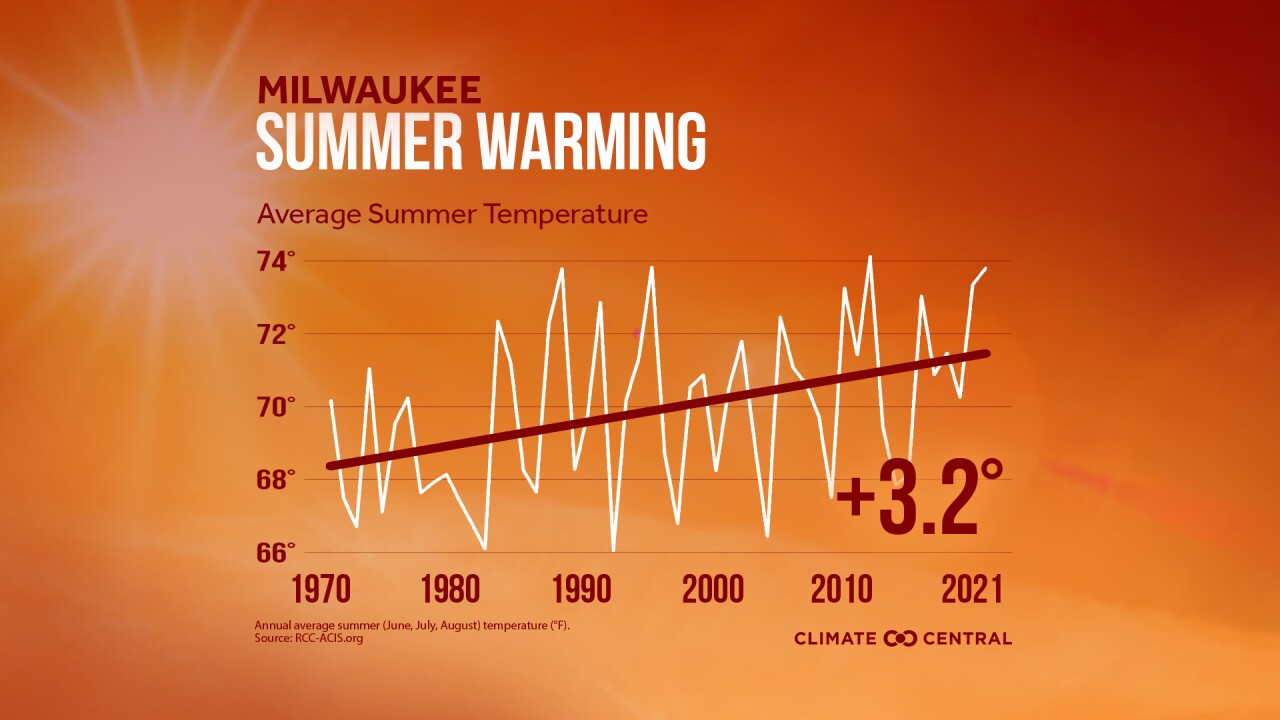June 1st is the start of meteorological summer, and many Wisconsinites are ready to enjoy the sunshine and warm weather. But extreme heat can be dangerous, and summers are getting hotter in southeast Wisconsin.
Looking at the latest climate numbers from the National Centers for Environmental Information, summers in Milwaukee are hotter now than they were just 10 years ago.
Large data sets are used when looking at climate numbers. The "averages" or "normals" for an area are based on 30 years of data. Let's compare the data from 1991-2020 to the previous data set of 1981 to 2010.

It's easy to see the difference between the two time-frames. The maximum, minimum, and average summer temperature (June, July, and August) are all warmer. High temperatures are averaging nearly 2° warmer, a significant difference for a span of just 10 years.
Research from Climate Central shows that over the last 52 years, the average summer temperature in Milwaukee has increased by 3.2°.

In Milwaukee, the urban heat island effect increases the impact from summer warmth. Highly developed cities and metro areas can be much warmer than areas with more trees and less pavement. More developed areas see warmer temperatures, both during the day and at night. In developed areas, pavement, buildings, and roads all absorb heat in the day, and then release that heat back into the surrounding air, both in the day and overnight, after the sun has set. Park spaces and suburbs tend to see less of this effect.
Extreme heat can cause heat exhaustion and even heat stroke. According to Ready Wisconsin, preliminary data from DHS shows nine people died in Wisconsin from May 1 to Sept. 30, 2021 due to heat-related causes, while another 803 people were treated in emergency departments.
Know the signs to look for when it comes to heat exhaustion and heat stroke.

Staying hydrated and taking breaks from the heat are two simple ways to reduce the risk of health issues related to extreme heat.
And don't forget about your pets during hot summer days. Make sure they have plenty of water to drink and take breaks from the heat. When taking walks with furry friends, be mindful that on sunny days blacktop temperatures can be much warmer than air temperatures and can burn the pads on doggie paws in just a few minutes time.

Stay with the TMJ4 Storm Team for the latest weather information all summer long.



